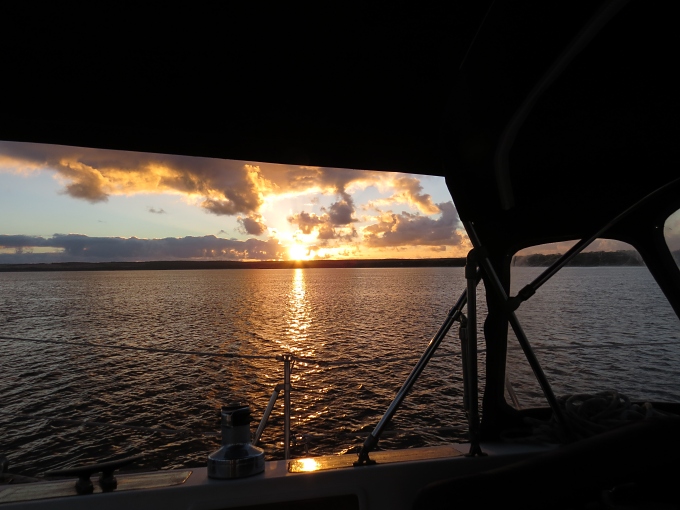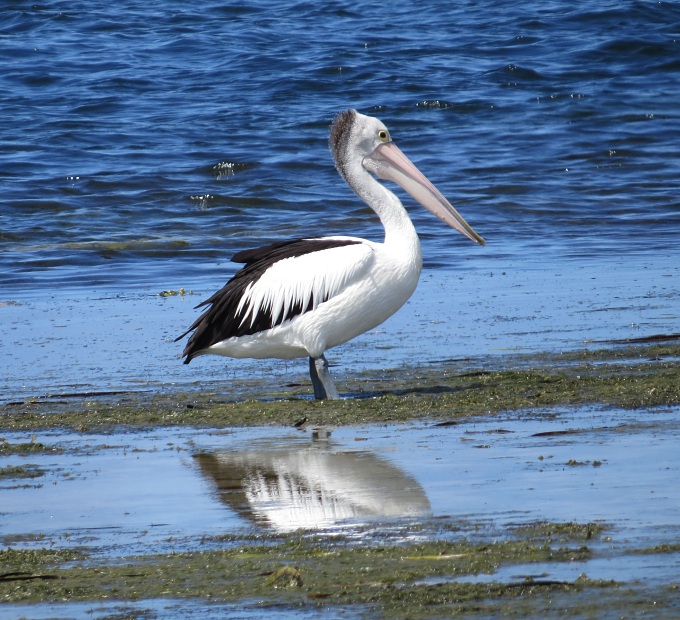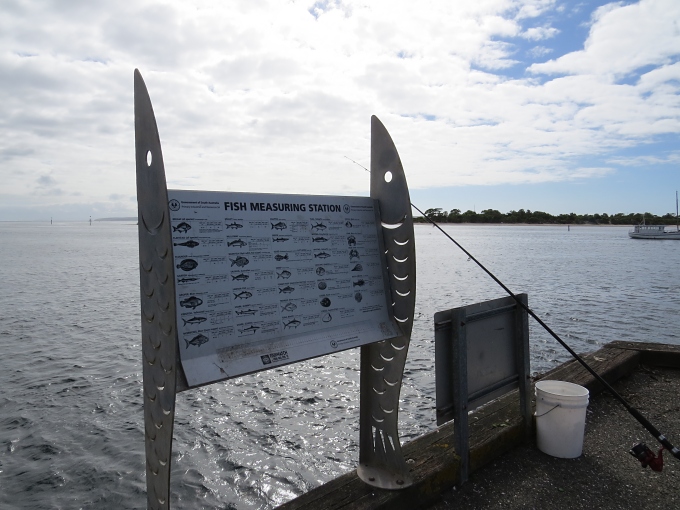
According to Lonely Planet, Adelaide, South Australia is one of top ten cities to visit in 2014 and wow, we're already here! The Huffington Post refers to Adelaide as “much to offer; too seldom visited”. It's kind of out of the way, I guess, and people usually think of Sydney or Melbourne when they think of Australian cities to visit, but there's plenty to do here and much of it is free.
We found the city and its suburbs delightful and though we never get to “see it all”, we can recommend the following.
1. Take a walking tour
Adelaide is a good walking city. There's street art, beautiful historic buildings interspersed with new high rises and lots of parks and statuary to take in. We use Lonely Planet Australia for ideas of what to see, where to go, and what not to miss. Once downtown, however, it's easy to stop at the friendly Visitor Info Centers for loads of free brochures, maps, train and bus scheds, etc. There's a free circulator bus that runs around the downtown CBD on the half hour … pick up a schedule and rest your dogs if you get tired of walking.
2. Mount Lofty
Mount Lofty is the highest point in the southern mountain range and offers great views of the city below. There's a restaurant, a gift shop and several walking trails which lead to or from Cleland Wildlife Park and the Mount Lofty Botanic Gardens. Admission is free. There is access by city bus, but it's not convenient, nor is it frequent. It's probably easier to get a lift, hire a car or take a tour.

3. Cleland Wildlife Park
We really enjoyed this wildlife park dedicated to native Australian animals. There are minimal enclosures and close up encounters with the animals is the norm, not the exception. Pet a kangaroo or a wallaby, get personal with an emu, hug a koala and let potoroos scamper between your feet. Birds, reptiles, Tasmanian devils, dingoes … all those critters you've heard about, but rarely see … and a few you've never even heard of. Admission is $20/pp. There's lots of room for picnicking and wandering.

4. South Australian Museum
The museum's collection of Aboriginal and South Pacific Islander artifacts is outstanding. Though there's much more, we thought this was the highlight. Admission is free.

5. Enjoy a festival
South Australia is the Festival State and there always seems to be something going on. While we visited, we enjoyed Australia Day celebrations, the finish of the Santos Tour Down Under Bike Race and Chinese New Year. The big fests start in February and March and stretch out throughout the year … The Fringe, WOMAdelaide, Cabaret, Film Fest, International Guitar Fest.
6. Gallery of South Australia
A wonderful collection of Australian, Aboriginal and Asian art and so much more ... all in one beautiful building. Wander through gallery after spacious gallery. Cool off and get some culture at the same time. Admission is free.
7. Central Market
Just off Victoria Square in downtown Adelaide, this is the place where the locals go to buy fresh produce, cheese, meat, fish. You name it … they got it at the Central Market. It's fun just walking around, but there are plenty of opportunities for coffee, lunch and samples. All free … except what you buy, of course. Check hours … they're closed Sundays and Mondays.
8. Chinatown
Right next door to the Central Market on Moonta Street, walk through the paifang (entry gate) and you're in another world. Chinese groceries, lots of restaurants and shops. All free for the wandering.
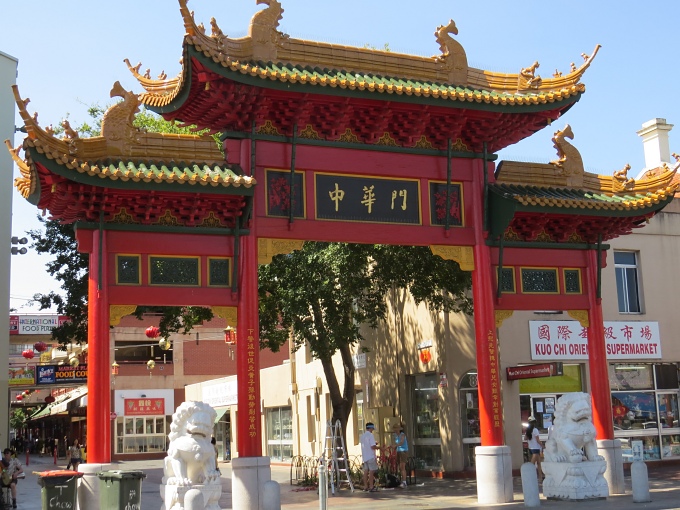
9. Adelaide Botanic Gardens
Right downtown in Adelaide's parklands lie these historic botanic gardens. We especially enjoyed the lotus pond, the three glass houses and the Santos Museum of Economic Botany, but there's much, much more to see and appreciate depending on the time of year. Lots of native birds hang out here for obvious reasons. Listen for the iconic kookaburra's distinctive song. Free guided tours at the Visitor's Center. There's a snack bar for coffee and light meals, restrooms and a gift shop. Admission is free.

10. Tandanya
A small gallery of Aboriginal art, well-displayed and well worth the visit. Docents on hand to answer questions. Cultural shows on some days for a small fee. Gift shop has lots of Aboriginal art, designs and information. Admission is free.
11. Rundle Mall
Rundle Mall is just plain fun. Lined with every imaginable shop and restaurant, it's fun to stroll along this pedestrian mall, peek into the Arcades and shops, appreciate the mall artwork like the Rundle Pigs and the Mall's Balls, have a coffee or a pint, visit an opal mine and seek out discovery art along the way. Get the Discovery Tour download here or a free brochure at the Visitor's Center.
Link: http://rundlemall.com.au/about/rundle-mall-discovery-trail.shtml

12. Port Adelaide Self-Guided Walking Tour and Maritime Museum
Don't forget the “burbs”, there's lots to see there, too. We especially enjoyed walking around historic Port Adelaide admiring old bluestone buildings and visiting the South Australian Maritime Museum. $10 admission includes a trip to the top of the lighthouse. There are boat tours up the Port River to see the famous dolphins and on Sundays, a flea market and buskers add to the fun. Get the walking tour map at the Port Adelaide Visitor's Center.
13. Go to the beach
There are white sand beaches everywhere and trains and buses to take you. Try Semaphore or Glenelg for easy access to the beach and beachside resort activities. If you have a car, drive down to the Fleurieu Peninsula and try out Horseshoe Bay at Port Elliott.
14. Pub search
Granted, you can do this in any Australian city, but Adelaide has lots of historic pubs and old hotels for a pint or a jar and maybe even a floater. We found pub food to be pretty good and usually pretty reasonably priced. We tried The Austral, but there's a pub on nearly every street corner, so take your pick.
15. Taste some wine
South Australia is known for its wines. You can visit McLaren Vale or the Barossa Valley on a wine-tasting tour or take a trip there yourself where “Cellar Doors” usually offer free wine-tastings. Or stop by the National Wine Centre of Australia, right next door to the Botanic Garden downtown, for wine tastings ($2-3+per tasting) and lunch.
Getting around:
Train/bus travel is convenient and cheap and gets you most everywhere. If you're around for awhile, consider buying an Adelaide Metro Card which offers convenient and reduced rates on all local buses and trains.
Free bikes are available for the day on a first come/first serve basis at City Bikes and even include a helmet.
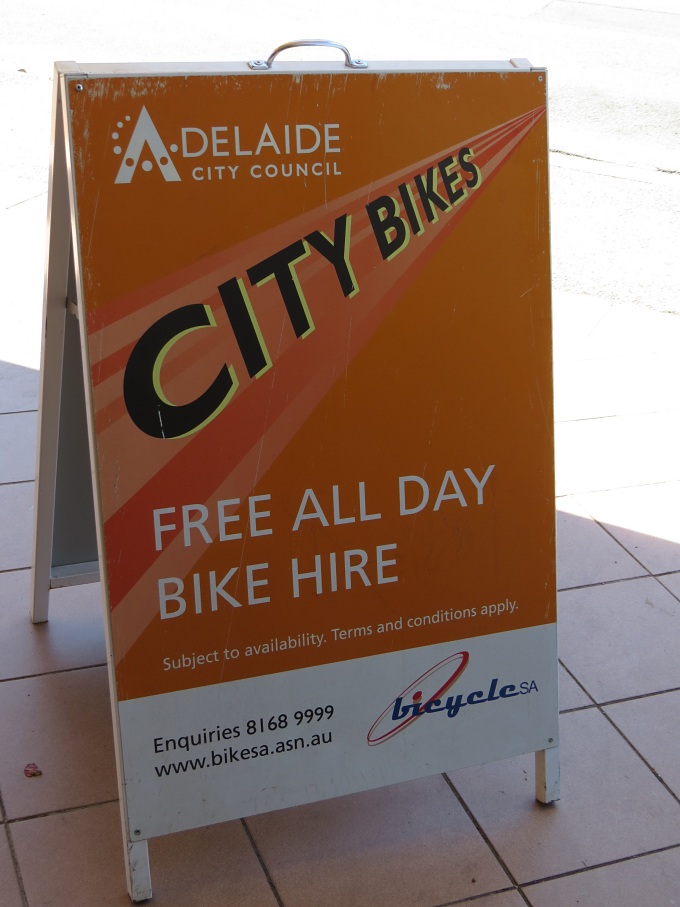
If you're heading north to Alice Springs or Darwin, the Ghan originates from Adelaide. You can also take the train to Perth across the Nullabor on the Indian Pacific or to Melbourne or Sydney on the Overland. Non-Australians can purchase an Explorer Pass that allows unlimited travel over specified periods of time at significantly discounted prices.
What to look for:
Try on a swagman hat or look for opals or eat a pie floater or a frog cake. Check out Uniquely South Australia for more ideas.
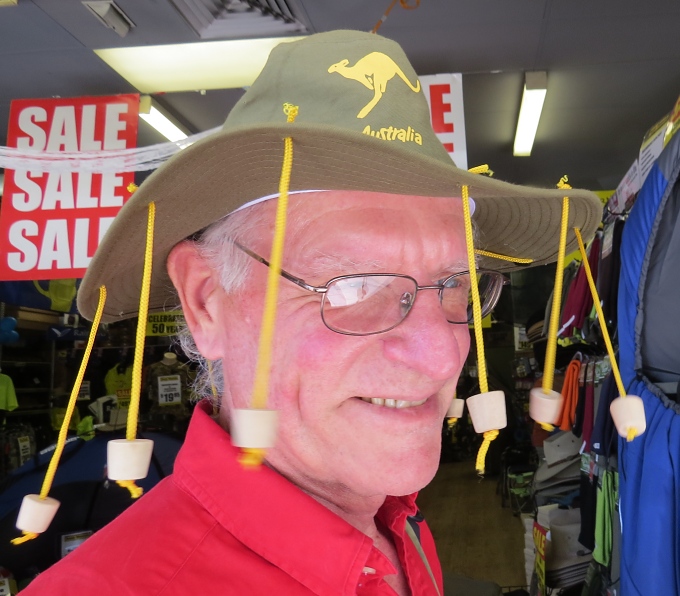
A little trivia:
the following movies were filmed all or in part in South Australia.
- Jaws (1975) - Southern Ocean off South Australia
- The Adventures of Priscilla, Queen of the Desert (1994) - Coober Pedy, Moon Plain
- Mad Max Beyond Thunderdome (1985) - Breakaways Reserve, Lunar Plains, Moon Plain, Coober Pedy
- Rabbit-Proof Fence aka Long Walk Home (2002) - Adelaide, Flinders Ranges, Lake Torrens, McLaren Vale, Nilpena Station, Onkaparinga River National Park & Recreation Park, Parachilna
- Shine (1996) - Adelaide, North Adelaide,Springfield, Glenside, Henley Beach
- Stealth (2005) – Flinders Ranges
By the way, the locals prefer we keep their city a secret. They love visitors … but not too many.
So after reading this, mum's the word.
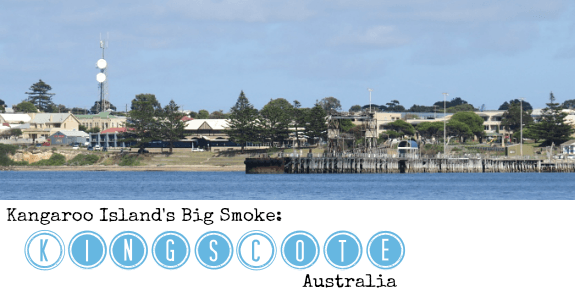 Half of Kangaroo Island's population of 4,000 people live in the vicinity of Kingscote. It's the commercial and shopping hub of the island. We motored the 15 miles or so in flat calm waters from Eastern Cove and anchored off the port. After confirming that 1) there were still no rental cars available and 2) we were too late to go on a tour, we decided lunch in town and a walk around Kingscote would have to do.
Half of Kangaroo Island's population of 4,000 people live in the vicinity of Kingscote. It's the commercial and shopping hub of the island. We motored the 15 miles or so in flat calm waters from Eastern Cove and anchored off the port. After confirming that 1) there were still no rental cars available and 2) we were too late to go on a tour, we decided lunch in town and a walk around Kingscote would have to do.









